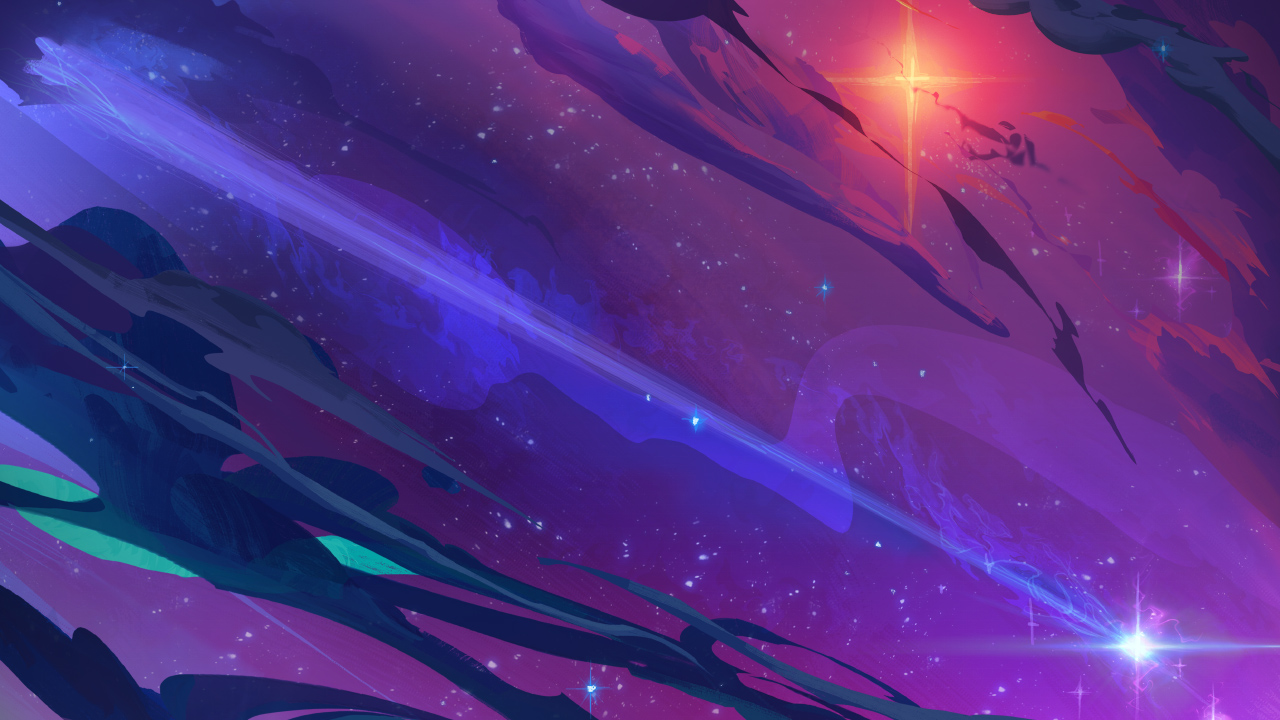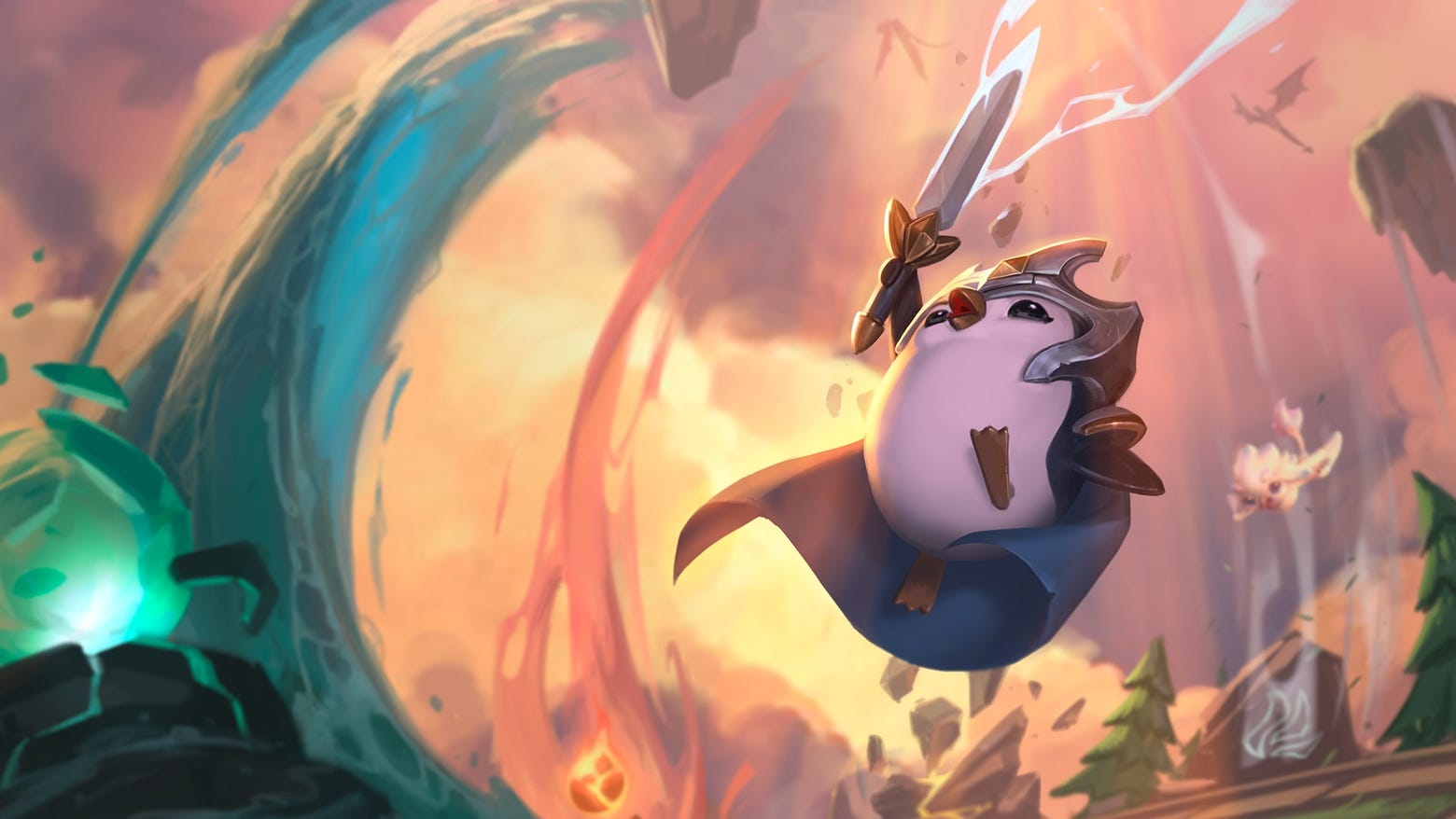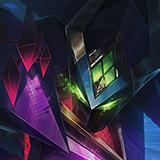As we approach the end of Rise of the Elements, it’s time to reflect on what we promised for the set, how we did, and what new lessons we’ll take forward as we move into the next chapter for Teamfight Tactics. (In case you missed it, the next set will be TFT: Galaxies. Head here for an intro to the new set mechanic or here for a preview of a few of the upcoming origin traits.)
This is a long one, so here's the TLDR:
Looking Back…
- TFT: Galaxies will have a LOT less random targeting for individual spells and will be more focused on specific things you can play around.
- Balance was better in Rise of the Elements than in the launch set (more viable strategies, fewer drastic shifts), but there's still room for improvement.
- Traits with strong disables (like Glacial) were less frustrating in Rise of the Elements, but we're still keeping an eye on them moving forward.
- Soft counters are good, hard counters are not so good. Expect us to continue making more soft counters and even fewer hard counters.
- Galaxies will feature one big mid-set expansion instead of the smaller one-off trait and champion additions.
- Bugs are still bad, and while there were fewer of them in Rise of the Elements, we need to be even better.
Looking Forward…
- We want spells to have higher impact, have greater clarity, and be more exciting visually.
- Expect more viable carries across the cost spectrum.
- Major traits (the big ones) should be a viable option, but should always be a little bit weaker than a truly creative combination of traits.
- The Spatula is coming back to the carousel but in more controlled and… unique ways.
- The new ranked season will start immediately with Galaxies, and the reset will work differently.
Looking Back
Let's talk about how we did applying our major learnings from the first set to RotE, including ways we hope to continue improving going forward.
We want to keep random effects in positive and controlled spaces.

We made progress here, but not as much as we could have. While it’s true that some of the more insane things like Phantom and Hextech were gone, there were still some effects that were random and fight-deciding. At the beginning of RotE, Mountain was often considered “Reverse Phantom,” though it didn’t end up being as impactful as was originally feared.
The bigger issue was our spell targetting.
Having so many champions with randomly-targeting spells led to a lot of extreme variance in fights. Taliyah and Azir were especially rough because they started with very high mana pools, which led to fights being decided by where their first cast went. Some random spells worked out quite well (Malphite and Lux) and added a healthy amount of fight variance. AoE Spells with variance make positioning a rich decision-making challenge, while single target CC spells that start early end up feeling like dice rolls.
For the next set, you’ll see a LOT less random targeting on spells and more focused on specific things you can play around. For example, one new spell is always aimed at the enemy with the most attack speed. This will allow you to use your game knowledge to outplay opponents more often.
Hold us to a higher standard for balancing the game so that a wider variety of comps can win in a given patch.

This is another one where we made significant progress compared to the launch set but didn’t nail it. The balance of Rise of the Elements was overall much better than the launch set, with way less outliers. But it also had its share of misses. Singed at launch, Brand in 9.23, Amumu in 9.24, “blender” Nocturne and Azir, and Yorick & Zed all jump out as clear balance issues that were a bit dominant in their given patch.
That being said, two things greatly helped balance in RotE. One is that the set’s design allowed counter options to come up in a lot of cases, so even if something was dominant, there were traits like Mystic and Cloud that could still give you a leg up. The other was that we were quicker to adapt when things became dominant. Strategic B-patches to target big outliers were helpful in bringing things to a more balanced state quicker. We also took a lighter-touch approach to balance, which led to less dramatic meta shifts, so people weren’t as thrown off patch to patch.
So while we made progress, we can still get better with balance. Continue to hold us responsible in making more comps viable patch to patch.
We’re aiming for less frustrating and fewer disables overall.

This is one we pretty clearly met. Compared to the launch set, there were just FAR fewer disables. The only really frustrating one was probably Olaf being Glacial Berserker. Someone with a 1.5 attack speed (or more) who AoE cleaves and freezes multiple champs was probably a bit over the line. Even when he was balanced or even sometimes underpowered, it just FELT frustrating to have your whole team frozen. Disables are healthy for keeping the pace of the game in check and creating tension in the battles, but when they get overwhelming (such as Launch 6 Glacial) that balance goes away.
Moving forward we will still have disables, as they are a key part of TFT champ design, but we’ll be keeping an eye on them and providing strategic and tactical ways to play around them.
Rise of the Elements will have more traits in the “soft counter” space.

This was a success, but also taught us a lot. Gone from the launch set were things like Dragon (100% magic damage reduction), and in its place were things like Mystic and Cloud. These traits allowed you to adapt and make smart decisions based on your opponents, but weren’t foolproof win conditions against certain comps. This was successful.
But we learned that even better-designed traits like Mystic still leave people feeling like they were hard countered. In addition, there were still a few traits that had that “hard counter” feel. (4 Desert vs 6 Warden being the biggest example). With this in mind, expect us to continue using soft counter traits even more while avoiding hard counters altogether.
Rise of the Elements will ship less total content patches, but each one will be larger.

While it’s true that we didn’t ship any content patches with only one champ like we did in the launch set, we’re still not happy with the way our content patches are coming out.
There were basically two major patches in Rise of the Elements that added content:
- 9.24: Added Lucian, Senna, Amumu, Soulbound, and UI improvements.
- 10.1: Added Leona, Karma, Lunar, and Item Reworks.
Other than that, patches were typically balance changes and small systemic adjustments (such as removing Spatula from the carousel). We feel like having two content patches that aren’t that big isn’t the best we can do, so for Galaxies we’re going to take a different approach. We’re going to launch one mid-set expansion, focusing our efforts on one specific cool moment to come back and see all the new stuff.
B-Patches will be extremely small and only for nerfing strong outliers.

We did this one really well. 9.22 and 9.23 didn’t have B-patches. 9.24 had a large one due to the holiday, but otherwise would've been fine. 10.1 had a small B patch that did exactly as we described (only nerfed 3 outliers), and 10.2 didn’t have a B-patch.
Our goal is to keep changes at a smaller and healthier amount than what we did in the launch set, and we seemed to hit that with RotE. The next step is to try to lessen the number of actual balance changes needed each patch so that things aren’t shifting around as much. That said, the B-Patch rules will continue into the next set, with us only using them to nerf outliers in extreme cases.
Rise of the Elements will have less bugs and issues.

We feel like we hit this in the sense that there were way less bugs this time around. Ranked was never taken down for example, compared to the launch set where we had to bring ranked down a few times at the start of patches. That being said, we still have a ways to go in this area as there were quite a few bugs that persisted for too long.
Zyra plants getting targeted by spells, Kindred’s spell not being able to crit with Jeweled Gauntlet, Quicksilver blocking the damage on spells with CC in them… These are just a few of the things we let slip through for too many patches. Each individual bug is not massively impacting, but the combination of them all leave TFT still feeling a bit incomplete. We’re going to continue to improve.
Looking Forward
Now let's look at some of the new things we learned from releasing Rise of the Elements, including how some different approaches paid off and others didn’t.
Spell Impact and Excitement

One thing that felt like a bit of a downgrade from the launch set was that many of our spells were less exciting and impactful. The best example to illustrate this is Sejuani compared to Malphite. Both serve a very similar purpose (frontline tanks with a big AoE CC move), but Sejuani’s spell had much better anticipation as it was cast and a much clearer impact… and that’s just one example.
In the launch set, champions like Karthus, Cho’Gath, Kennen, Garen, Blitzcrank, Lissandra, and many more had very high impact spells that were exciting when they were cast. Compare that to Syndra, Master Yi, Nautilus, Azir, and others that did similar things but in a way that was harder to appreciate and get excited by. This led to the game being much less exciting to spectate.
With the next set, expect to see the return of many high-impact and exciting spells and a more exciting viewer experience.
Combat Clarity

A similar topic but it’s worth its own section. There were quite a few changes and champions that ended up making combat a lot harder to follow. Summoners were the biggest culprit here, as filling the board with Zyra plants and their projectiles, Malzahar minions, hard-to-see Azir soldiers (and more) led to a very busy board that often became almost impossible to track.
In addition, we had quite a few invisible spells and effects that were hard to keep up with. The Berserker cleave was just one kind of “invisible AoE damage” that you had to trust was happening, but it was hard to track and be excited abo
ut. There were also Syndra orbs and Taliyah spells with no travel time, Yasuo and Kha'Zix moving around the map quickly, tiny Sivir boomerangs, and more. Expect to see a push for more visible and appreciable spells in the next set.
Champion Balance and Design… Again

There’s a lot to go into here as this could be its own article. Let’s see if we can get through some of the key points.
The balance of spell power and stats relative to Star Level is in a much better spot: We made some big plays in RotE regarding this: We removed stats from 3-stars, we put MASSIVE amounts of spell power into four and five cost 3-stars, and we introduced item star scaling. This accomplished things we felt improved the game, such as opening more possible win conditions, increasing satisfaction when upgrades were achieved, and preventing the game from feeling too solved. But we still have room to improve. Currently it feels like 1-star units are too weak to include in armies after the early stages, so we’ll be continuing these kinds of adjustments in TFT: Galaxies.
One and two cost champs were a bust this set: With a few exceptions (3-star Kog and Vayne come to mind) you couldn’t really consider viable late game options with one and two cost champions. They merely existed to act as trait bodies instead of having their own win conditions and fantasies. Compare that to the launch set which had Lucian, Lissandra, Zed, and more. We need to get more one and two cost champs to be playable in the end game, so expect to see a big push to make that happen.
Creative but balanceable spell design is tough: Is something like Rise of the Elements Zed good for the game? He’s a super exciting five-cost champion who made some awesome moments (All-stars Zed vs Sivir is still an amazing highlight), but he was also very feast or famine. Zed was hard to use and often underpowered UNLESS you got the right items, in which case he became an unstoppable force. GA/Redemption/Dragon’s Claw Zed in particular was a very powerful and unintuitive build. Despite all this, we think it’s important to keep pushing the envelope with creative spells that push the genre and game into new possibilities. So expect to see more of these kinds of unique spells, with a big focus on how to do so while also keeping them healthy for the game.
And that’s just scratching the surface. There’s more we could talk about, but for now expect to see improved champ and spell design in the next set, with more satisfying carries across the cost spectrum.
Major Vs Minor Traits

For context here, a major trait is one that allows you to stack a lot of the same thing (6 Inferno, 6 Light, 6 Berserker, etc.) and minor trait is either smaller traits (like Mountain) or when you don’t go deep on a major trait (a 3 Mage, 3 Inferno, 3 Summoner comp, for example).
At the start of Rise of the Elements, none of the major trait comps were powerful enough to play at the end game (except maybe Light). Using Mage as an example, it was better to take the powerful mages with powerful traits that’d buff the primary carry (Brand, Vlad, and Syndra to get Ocean and Mage) and ignore the others so you could maximize your trait connections. This was really fun for our more clever and connected players, but also made chasing things like 9 Inferno unsatisfying. So over the course of the set, we made corrections to things like Inferno, Berserker, and Mage to make them more viable.
Unfortunately we swung too hard in the other direction. By the end of the set, it was mostly about the 6-piece trait options, and things like 3 Berserker or 3 Mage weren’t really seen. Our goal is for major-trait-focused comps to be a totally viable option, but in an optimal set up they should be about 95% of the power of a more creative comp using many Minor traits, as those are more difficult to put together. Expect us to be balancing and designing the traits next set to try to meet this goal and give more creative branching options.
The Spatula

With both the launch set and Rise of the Elements, we saw metas that were dominated by getting a key Spatula and using that to 1) make a champ that isn’t normally a trait become that trait, and 2) accelerate to a more difficult-to-get comps. Void-Assassin Kassadin from the launch set and “blender” Nocturne and Azir from RotE were the most notorious. As players learned how to optimize their economy and player damage to maximize the chances of getting these comps, it became clear that this wasn’t really what we intended when we designed the Spatula items.
The Spatula was designed to be a very rare item that opened up new options if you were lucky enough to get one. But frankly it was showing up in the carousel way too often, especially early on. So in 10.3 we did a test to see what happened if we took Spatula off the carousel. The results have been positive for the most part, but we think the best solution requires more finesse. We want to maintain that the Spatula isn’t something you can count on, but rather something you have to adapt to when it shows up.
In the next set, expect to see Spatula back on the carousel, but in a much more controlled and… unique ways. We look forward to seeing some of your reactions to what is possible.
Other Thoughts

Of course there’s more we can talk about, but this is already a very long article, so here’s a couple final quick points.
Ranked being off for the first patch and the ranked reset are both experiences we can improve on for TFT: Galaxies. Being stuck in Bronze while playing against Diamond or higher players made the climb way too difficult early, so expect to see changes there. And ranked will be available right away.
Finally, gold inflation is a bit out of hand. Having enough gold to buy all your first shops takes all the interesting decision making out of the game, and having 50 gold by Krugs with little effort allowed you to snowball the game and increase the pace of the match to speeds faster than we’d like. We’ll be making some big swings at gold inflation in the next set.
The End
And with that, Rise of the Elements is coming to an end. On behalf of the whole TFT development team, thank you for playing and enjoying the game. As we continue to do our best to make TFT even more fun, please keep giving us feedback on what you want to see. Your passion for the game inspires us to keep moving forward. Good luck in your ranked climb, and we’ll see you for the next set: Galaxies.


